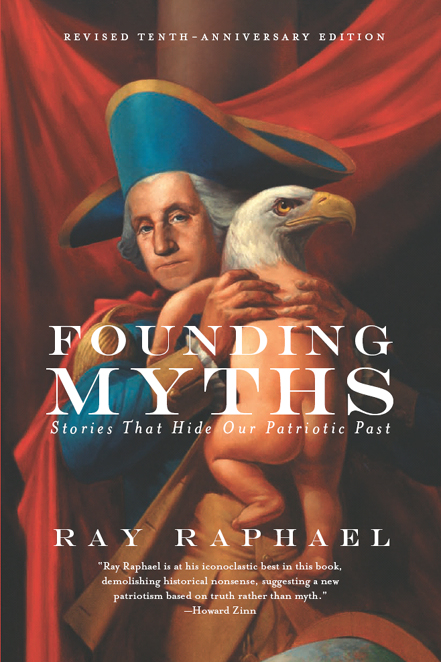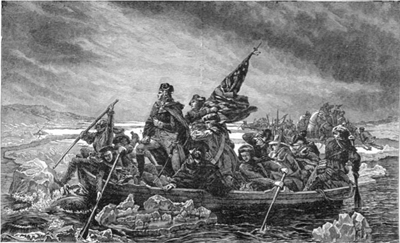Founding Myths
Authors: Ray Raphael


Ray Raphael has taught at a one-room public high school, Humboldt State University, and College of the Redwoods. His seventeen books include
A People's History of the American Revolution, The First American Revolution, Founders,
and
Constitutional Myths
(all available from The New Press). Currently a senior research fellow at Humboldt State University, he lives in northern California.
ALSO BY RAY RAPHAEL
Constitutional Myths: What We Get Wrong and How to Get It Right
Mr. President: How and Why the Founders Created a Chief Executive
Revolutionary Founders: Rebels, Radicals, and Reformers in the Making of the Nation
(co-edited with Alfred F. Young and Gary B. Nash)
The Complete Idiot's Guide to the Founding Fathers and the Birth of Our Nation
Founders: The People Who Brought You a Nation
The First American Revolution: Before Lexington and Concord
A People's History of the American Revolution: How Common People Shaped the Fight for Independence


© 2014, 2004 by Ray Raphael
All rights reserved.
No part of this book may be reproduced, in any form, without written permission from the publisher.
Requests for permission to reproduce selections from this book should be mailed to: Permissions Department, The New Press, 120 Wall Street, 31st floor, New York, NY 10005.
Originally published in hardcover by The New Press, New York, 2004
This revised edition published in the United States by The New Press, New York, 2014
Distributed by Perseus Distribution
CIP data available
ISBN 978-1-59558-974-3 (e-book)
The New Press publishes books that promote and enrich public discussion and understanding of the issues vital to our democracy and to a more equitable world. These books are made possible by the enthusiasm of our readers; the support of a committed group of donors, large and small; the collaboration of our many partners in the independent media and the not-for-profit sector; booksellers, who often hand-sell New Press books; librarians; and above all by our authors.
Composition by dix!
This book was set in Fournier MT
10
 Â
9
 Â
8
 Â
7
 Â
6
 Â
5
 Â
4
 Â
3
 Â
2
 Â
1
In memory of Al Young and Pauline Maier
“Who shall write the history of the American Revolution?
Who can write it? Who will ever be able to write it?”
âJohn Adams to Thomas McKean,
July 30, 1815
CONTENTS
Introduction: Inventing a Past
 Â
1.
 Â
Paul Revere's Ride
 Â
2.
 Â
Sam Adams's Mob
 Â
3.
 Â
Molly Pitcher's Cannon
 Â
4.
 Â
The Shot Heard 'Round the World
 Â
5.
 Â
The Winter at Valley Forge
 Â
6.
 Â
Jefferson's Declaration
 Â
7.
 Â
An Assembly of Demigods
 Â
8.
 Â
American Aristocracy
 Â
9.
 Â
“Give Me Liberty or Give Me Death!”
10.
 Â
The Whites of Their Eyes
13.
 Â
The Final Battle: Yorktown
14.
 Â
March of the American People
Conclusion: Why We Tell Tall Tales
Afterword: Which Myths Persist, and Why
FOUNDING MYTHS
Â
“Let the world admire our patriots and heroes.”

Washington Crossing the Delaware.
Engraving based on painting by Emanuel Leutze, 1851.
INTRODUCTION: INVENTING A PAST
W
hen settlers from across the Atlantic arrived on the east coast of North America, they felt they were on uncharted territory. From the Old World they imported the traditions that defined them as a people, since the New World, which they treated as a blank slate, appeared in their perspective to have no history of its own.
Slowly, over more than a century and a half, colonists developed local, homegrown histories. These remained separate and distinct until suddenly, with one cataclysmic event, they merged. The Revolutionary War provided Americans with shared stories of a common past. This past, ever since, has served the interests of nation building. For more than two centuries, the oft-repeated story of how the United States achieved its independence has bound Americans together.
All nations like to celebrate their origins, but the birth of our nation makes a particularly compelling story. The United States has a clearly defined “founding,” the work of a single generation. Most nations are not so fortunate. The story of Britain's founding must cover the Norman invasion (1066), the Magna Carta (1215), the Glorious Revolution (1688), and the Act of Union (1707). China's founding includes the rise of ancient dynasties, the Nationalist Revolution in 1911, and the Communist Revolution in 1949âtoo much to tell in a cohesive
story. Mexico has only two founding moments, independence in 1821 and revolution in the early twentieth century, but these were separated by ninety years. Canada eased into nationhood so gracefully that it hardly has a story to tell.
1
Our story, by contrast, is simple yet grand. Its plotline is easy to follow: American colonists resisted British oppression, fought a war, achieved independence, and established their own government. Within this straightforward structure we can embellish as we please, but the storyline itself is clean and efficient. It gets the job done. It establishes a separate identity for the American people.
How we choose to tell this story helps define our nation. Daily, politicians invoke “our founders” in support of some cause totally foreign to the American experience of the late eighteenth century. They place the pastâmore precisely, a past they imagineâin service of a political present.
Stories of the American Revolution were first communicated by word of mouth, and these folkloric renditions, infinitely malleable, provided fertile grounds for the invention of history. Before the Revolution, angry and animated colonists gathered in taverns and meetinghouses to rail against acts of Parliament; after the fighting was done, this same crew downed pint after pint of hard cider while exchanging old war stories. For decades, men and women of the early republic told and retold what had happened, augmenting and enriching their skeletal memories of actual events, removing what was too painful to recall (no shortage there) while embellishing what could be seen as heroic (no shortage there either). At funerals or Fourth of July celebrations, orators used tales of the Revolution as grist for their rhetoric. While audiences applauded and critics ranked their performances, these civic preachers competed in the art and sport of patriotic expression. This vibrant oral tradition helped produce a history that was detailed but unfettered. Divested of any need for documentation, it went freely wherever it wanted.
The visual arts, like the oral tradition, gave the past a place in the present. During and after the Revolution, engravings and lithographs
depicted the major events to popular audiences. More pliable than photography, these artistic forms allowed for leeway in interpretation. In the early nineteenth century, grandiose Romantic paintings offered indelible images of battles and key political proceedings. Subsequent generations, viewing reproductions in popular histories and textbooks, used these images to help shape a collective “memory” of the Revolution. Set to canvas long after the war had ended, they became national icons. Today, the two most dominant visual reflections of the American Revolution are John Trumbull's 1818 painting
Declaration of Independence
and Emanuel Leutze's 1851 masterpiece
Washington Crossing the Delaware
âeven though there was no ceremonial signing of the Declaration on July 4, 1776, the date mistakenly applied to Trumbull's painting when it was hung in the Capitol Rotunda, and the flag displayed prominently in Washington's boat had not yet been created.
2
Oral tradition and artistic imagination filled in the blanks left by incomplete and selective documentation. Although a handful of exceptionally literate men bequeathed volume after volume of letters, diaries, and memoirs, these writings emanated from a very small segment of the population, unrepresentative of the whole. Many of these first-person accounts were set to paper decades after the fact. Because of skewed sampling, personal bias, and the effects of time on memory, they cannot always be accepted at face value.
